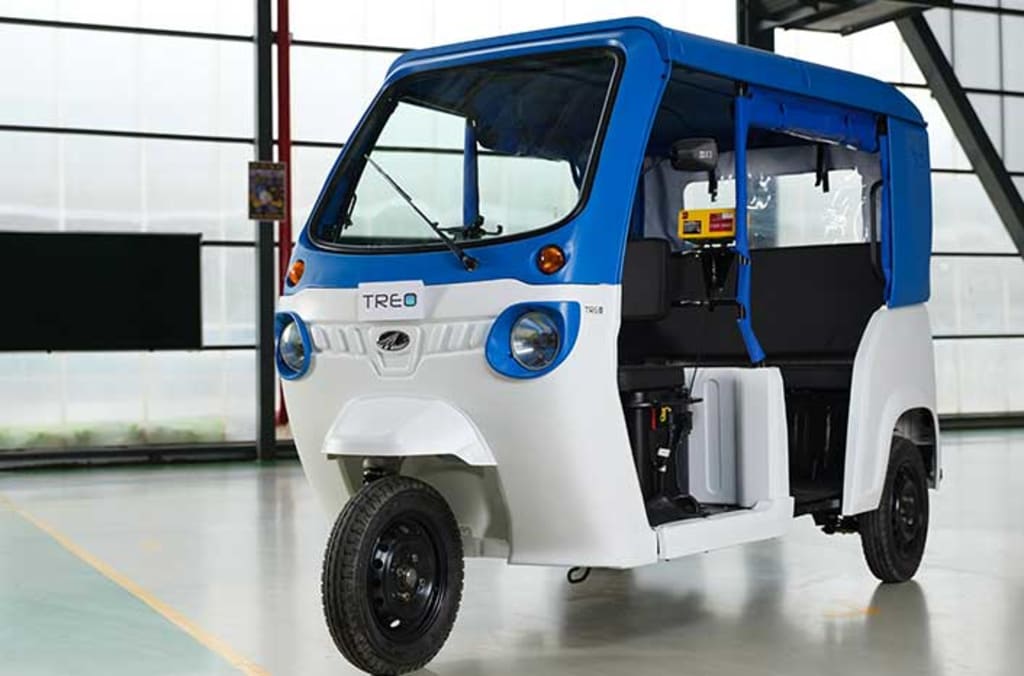Refuelling Electric Scooters and Rickshaws
Standardised batteries for swapping - a sensible step to reduce charge-time and increase up-time

Months ago I wrote about refuelling electric cars by swapping batteries.
Then, China took up my idea…
And now India is on course to do the same with electric scooters, motorcycles and rickshaws. It’s starting from the top down there, driven by law.
New rules to make batteries swappable across different models have been suggested by think-tank NITI Aayog. The NITI Aayog serves as the apex public policy think tank of the Government of India so their recommendations carry weight.
Why is it important?
Pollution reduction in a big market
But there are still a large number of two-stroke gasoline-powered rickshaws contributing significantly to India’s pollution problems. Add in motorcycles and scooters.
In 2018, according to Bloomberg, there were 1.5 million battery powered rickshaws in India. That’s four years ago, just e-rickshaws, but the market is growing quickly.
The number of e3-W vehicles and auto rickshaws across India is expected to be approximately four million units in 2030 — statista.com
Economic attraction to drive uptake
Apart from pollution reduction, battery swapping is an important policy because, as with any asset that is employed in a business, downtime is costly. Electric rickshaw owners can recharge their batteries and even swap them within their own model range, but interchangeability would offer the rickshaw owners much more flexibility of operation.
Battery swapping is an effective alternative to vehicles being sold with fixed batteries.
Owners can swap discharged batteries for charged ones at swap stations. Vehicles can be sold without a battery and the owner can subscribe to a battery exchange service.
This considerably reduces the upfront purchase cost of the vehicle and effectively spreads the battery cost over the life of the vehicle. It also makes battery recycling a less costly process.
That means quicker take-up in the market and the lower costs may also encourage pedal-rickshaw owners to migrate.
The policy details
The target vehicle segments for battery swapping are electric 2-wheelers and electric 3-wheelers, which are heavily concentrated in urban areas.
In 2020, the registered number of three-seater rickshaws (TSRs) in Delhi, India, amounted to over 114 thousand — statista.com
The rollout of battery swapping stations will therefore be phased. All metropolitan cities with a population greater than 4 million (as per Census 2011) will be prioritised for the development of battery swapping networks under the first phase. All major cities such as state capitals, UT headquarters and cities with populations greater than 5 lakh (as per Census 2011) will be covered under the second phase, given the importance of the 2W and 3W vehicle segments in growing cities — Draft policy from NITI Aayog
Okay, you’re wondering what a lakh is? I was too.
A lakh is a unit in the Indian numbering system equal to one hundred thousand. In the Indian 2,2,3 convention of digit grouping, it is written as 1,00,000. For example, in India 150,000 rupees becomes 1.5 lakh rupees, written as ₹1,50,000 or INR 1,50,000. Thanks Wikipedia
I learn something every day. I just hope that they got the statistics right and there’s nothing lakhing.
Update
I'm currently in Indonesia and just had my first ride on an ojek (taxi moped). It's a crazy place with thousands of mo-bikes and few filling stations. Those stations that exist have very long queues. So they just stop at a roadside stall instead and buy a litre of gasoline in a water bottle and pour it in to the mo-bike. Car drivers do it as well.
It's illegal and a crazy system. But it works. And yes, I've seen people smoking as it's done. I moved away quickly.

***
Canonical: This story was first published in Medium on 11 May 2022 [edited and updated]
About the Creator
James Marinero
I live on a boat and write as I sail slowly around the world. Follow me for a varied story diet: true stories, humor, tech, AI, travel, geopolitics and more. I also write techno thrillers, with six to my name. More of my stories on Medium






Comments
There are no comments for this story
Be the first to respond and start the conversation.